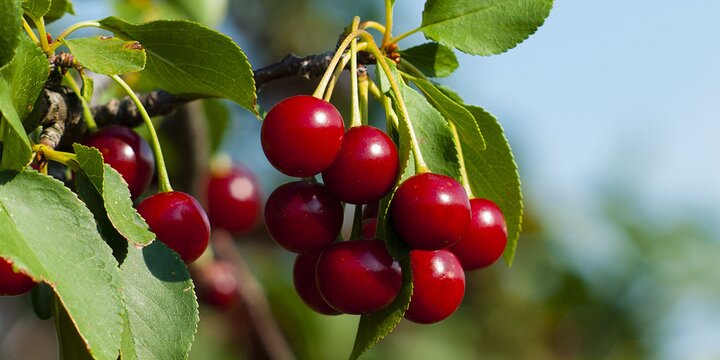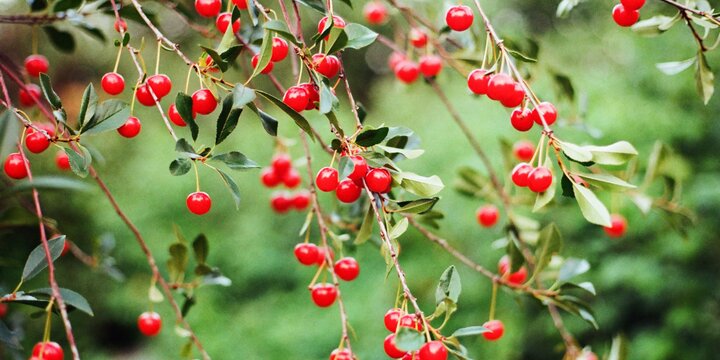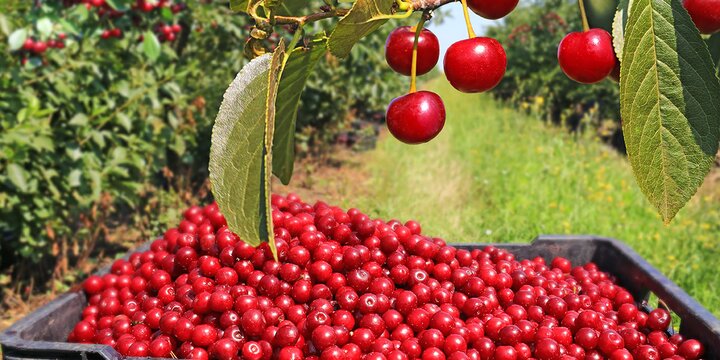Growing Cherry Trees
Sour cherries can be grown all over the state. Mahaleb is the standard rootstock for sour cherries but the semi-dwarf rootstocks such as Gisela are also becoming more popular. Plant sour cherries in a location with well-drained soil and full sun. Mature sour cherry trees need to be pruned every year. The most common sour cherry disease in Illinois is cherry leaf spot that can be controlled by applying recommended fungicides. Suggested varieties include 'Montmorency,' 'Meteor,' 'Suda Hardy,' 'Mesabi,' and 'North Star.' All are called self-fruitful, which means cross-pollination is not needed.
Sweet cherries can be grown in central and southern parts of the state. Plant any two or more varieties of sweet cherry for cross-pollination. Mazzard is the standard rootstocks for sweet cherries but dwarfing rootstocks such as Gisela are also becoming more popular. Mature sweet cherry trees need to be pruned every year but less severely compared to other fruit trees. The suggested varieties include 'Black Tartarian,' 'Glass,' 'Ranier,' 'Stark Gold Yellow,' 'Stella,' 'Van,' and 'Windsor.' 'Stella' is reported to be self-fruitful and can be planted alone.
Harvest ripe cherry fruits as soon as possible in order to avoid fruit cracking that occur when it rains. Cover cherry trees with nets to protect mature fruits from birds.
Pruning Sour Cherries
Sour cherries may be trained to either the central-leader system or to the open-center system. For the open center system, use the training methods described for peach and nectarine trees. This system may be used for standard trees and also for ‘Meteor’ and ‘North Star’ natural dwarf trees, but the central leader system is preferred for ‘Meteor’ and ‘North Star.’
For the central-leader system, use the training methods described for semi-dwarf apple trees. For ‘Meteor’ and ‘North Star’ natural dwarfs, use the specifications given for dwarf apple trees.
Sour cherries will get too dense if not pruned.
Standard trees need about the same amount of pruning as semi-dwarf apple trees.
Sour cherries trained to the open-center system will need about one third to one-half of the amount of pruning suggested for peach trees because they grow less vigorously than peaches and produce fruits from spurs on older wood as well as on 1 year-old twigs.
Pruning Sweet Cherries
Sweet cherry trees are best trained to the central- leader system. For standard trees, a system of five to eight scaffolds spaced 8 to 16 inches apart vertically along the trunk with a trunk height of 10 to 15 feet is suggested. For dwarf trees, select five to eight scaffolds spaced 5 to 10 inches apart vertically along the trunk. Trunk height should be 5 to 7 feet.
In pruning at planting time, if unbranched whips are planted, do not tip them. If branched trees are planted, three or four scaffolds may be selected, but do not tip the scaffolds.
During the early years after planting, tipping or shortening of scaffolds is not suggested, except for overly vigorous ones.
Pruning should be light to reduce the danger of winter injury and keep the trees productive. Heavy pruning of sweet cherries disrupts production and subjects trees to winter injury. Sweet cherry trees are naturally large trees and there is no practical way to keep them small. Since they naturally tend to grow upright, give them as much spread as possible by retaining the outward-growing branches and removing the upright ones.
As trees grow older, some thinning out will be necessary, but branch shortening should be limited. In general, sweet cherry trees need less pruning than other types of fruit trees.


